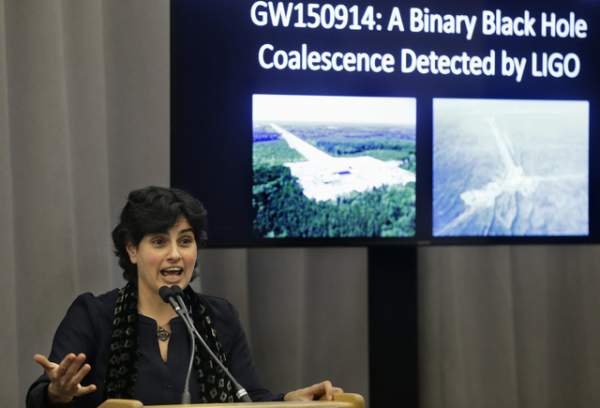-
Tips for becoming a good boxer - November 6, 2020
-
7 expert tips for making your hens night a memorable one - November 6, 2020
-
5 reasons to host your Christmas party on a cruise boat - November 6, 2020
-
What to do when you’re charged with a crime - November 6, 2020
-
Should you get one or multiple dogs? Here’s all you need to know - November 3, 2020
-
A Guide: How to Build Your Very Own Magic Mirror - February 14, 2019
-
Our Top Inspirational Baseball Stars - November 24, 2018
-
Five Tech Tools That Will Help You Turn Your Blog into a Business - November 24, 2018
-
How to Indulge on Vacation without Expanding Your Waist - November 9, 2018
-
5 Strategies for Businesses to Appeal to Today’s Increasingly Mobile-Crazed Customers - November 9, 2018
Gravitational Waves From Black Hole Collision Rock Scientific World
“The ability to detect them has the potential to revolutionize astronomy”, Hawking told the BBC after LIGO’s announcement on Thursday. The LIGO detectors in Livingston, Louisiana and Hanford, Washington utilize laser light as a very precise stopwatch to measure this effect.
Advertisement
Their existence was first predicted by Albert Einstein in his Theory of Relativity a century ago but has never been proven – until now. Scientists predict that the discovery could open a new window to unravel hidden secrets of the universe.
If the discovery is successfully replicated by other researchers, it will be known as one of the seminal achievements in physics.
Gravitational waves, sometimes called the soundtrack of the universe, are elusive ripples in the fabric of space and time created by every massive object in the universe.
From a snatch of data 20 thousandths of a second long, they listened to the two black holes accelerating from circling around each other at 30 times a second to 250 times a second, before violently colliding.
For the last more than two decades the LIGO has been working without pause on this project. However, the waves are so small that it takes a detector like LIGO, capable of measuring distortions one-thousandth the size of a proton, to observe them. The two black holes that merged were both approximately 100 kilometers across, each containing at least 29 times the same mass as the earth’s sun.
LIGO team members report the gravitational wave detection in a new paper published Thursday in the journal Physical Review Letters. Eventually they might allow us to look into those same odd parts of the universe, giving us clues about how it began.
A user who said he was one of the 1,000 LIGO scientists who worked on the research said: “Great explanation!”
For 100 years, physicists have been searching for the gravity waves that Einstein predicted should exist.
Gravitational waves are the “soundtrack of the universe,” said team member Chad Hanna of Pennsylvania State University.
Advertisement
Gravitational waves sent out from a pair of colliding black holes have been converted to sound waves, as heard in this animation. This is not just about the detection of gravitational waves… what’s really exciting is what comes next. These laser beams are bounced back and forth between mirrors until they are combined in a detector.




























